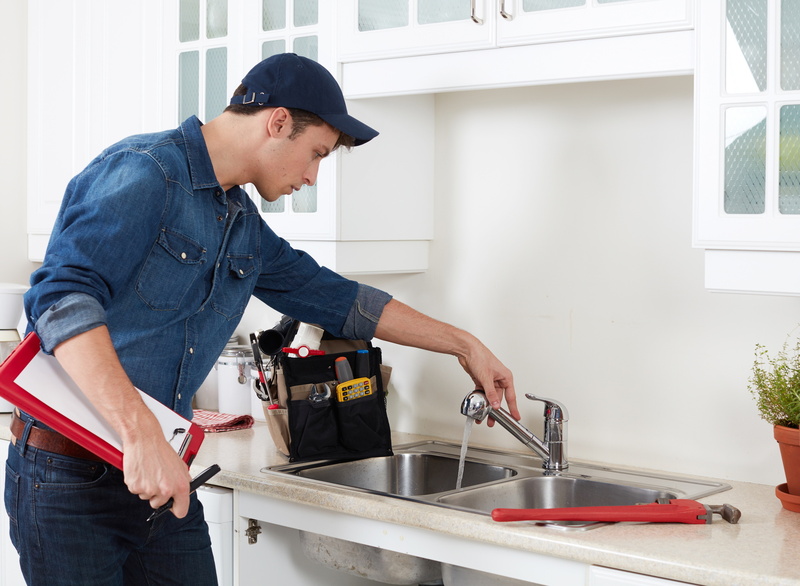Kitchens are often considered the heart of the home, where meals are prepared and memories are made. As such, ensuring that everything operates smoothly is a top priority, not least when it comes to plumbing. Effective kitchen plumbing not only prevents unwanted leaks and damages but also contributes to the overall efficiency and hygiene of your kitchen space. In this DIY guide, we’ll share some easy yet vital tips that can help even the novice homeowner keep their kitchen in top shape.
By maintaining and understanding a few basic aspects of kitchen plumbing, you can save money, prevent water damage, and enhance your kitchen’s functionality. Whether you’re dealing with clogs, leaks or installations, handy tips can make all the difference. We’ve compiled expert advice under five key aspects to help you navigate common issues and ensure your kitchen remains a cornerstone of contentment and cleanliness.
Contents
Understanding Your Kitchen’s Plumbing Layout
Before you dive into any plumbing fixes or upgrades, it’s crucial to understand the basic layout of your kitchen’s plumbing system. This includes knowing where the pipes are located, how they connect to various appliances, and what each pipe is responsible for in terms of water supply and waste removal. Familiarizing yourself with these details will make troubleshooting much simpler and help avoid any unintentional damage. One way to get informed about how well-designed plumbing can enhance a kitchen’s efficiency is by reading articles like Why Professional Plumbing is a Key to a Dream Kitchen.
For those interested in perhaps reshuffling their kitchen layout or upgrading appliances like dishwashers or sinks, understanding these connections is imperative. Always shut off the main water supply before attempting any changes or repairs to avoid flooding and other complications.

Regular Maintenance Checks
Prevention is better than cure — this age-old adage holds very true for plumbing. Regularly inspecting your pipes and fittings for leaks or corrosion can prevent large-scale damages in the future. Keep an eye out for moisture or small drips under the sink as they can indicate early-stage leakage. Also, occasionally check faucet aerators on sinks as water deposits can build up there and affect water pressure.
Besides visual inspections, listening for odd noises in the taps or the sound of running water when no tap is on can catch hidden issues which might need professional attention. Creating a routine for these inspections can save hefty repair costs down the line.
Cleaning Drains Without Chemicals
A common issue in many kitchens is clogged drains due to accumulations of food waste, grease, and soap deposits. While commercial chemical cleaners offer a quick fix, they can erode pipes over time and aren’t environment-friendly. A simple home remedy solution involves baking soda and vinegar – natural substances that react together to break down greasy remnants efficiently without damaging your pipes.
Pour half a cup of baking soda into the drain followed by half a cup of vinegar; cover it for 30 minutes to let the mixture do its work before flushing it down with hot water. This regular practice keeps your drains clear and fresh without harsh chemicals.
Installing Water-Saving Fixtures
Updating your kitchen with water-saving fixtures not only contributes to reducing your utility bills but also supports environmental conservation efforts. Consider replacing faucets with low-flow models which use less water without sacrificing performance. Similarly, installing a dishwater with an Energy Star rating ensures efficient use of water and energy.
While initially investing in such technologies might seem costly, the long-term savings are substantial not only on your bills but also on less frequent needs for pipe and drainage maintenance due to lower water usage stressing the system.
DIY Plumbing Tools Every Homeowner Should Have
No basic plumbing kit is complete without a few essentials: plunger, pipe wrench, plumber’s tape (for thread sealing), drain snake (for deeper clogs), and an adjustable wrench (for tightening or loosening nuts). Investing in good quality tools pays off as they last longer and provide better serviceability when tackling common kitchen plumbing tasks yourself.
Beyond tools, having some essential seals and washers at hand means you’re always prepared for minor fixes like leaking faucets or pipes under the sink before they turn into major issues.
In conclusion, addressing minor plumbing concerns promptly prevents bigger problems later on, ensuring that your kitchen remains both functional and delightful. Moreover, embracing preventive measures like regular checks and opting for eco-friendly solutions further enhances your home’s efficiency while being responsible towards our environment.
Diligent attention towards these facets not only yields an ideally functioning kitchen but also instills a sense of accomplishment in managing one’s domestic sphere efficiently. Apply these easy tips today to benefit from improved functionality and peace of mind concerning your home’s plumbing health.
